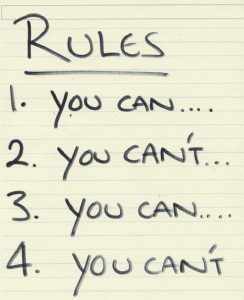In a world where any employee can tweet their CEO, the lines that traditionally delineated power and influence have been blurred.
So much so in fact, when Dr. Jeffrey Pfeffer teaches about corporate hierarchical power structure, his students often push back. That model of power isn’t relevant anymore, they insist – it’s such 20th-century thinking!
Pfeffer’s students are largely Millennials, the youngest generation now in the workforce. They think the traditional power structure in business is changing, and companies are becoming more dynamic and less hierarchical.
They’re wrong.
Why traditional power structures work
“There’s this belief we are all living in some postmodernist, egalitarian, merit-based paradise and that everything is different in companies now,” he says. “But in reality, it’s not.”
In fact, in a new paper that explores the notion that power structures haven’t changed much over time, Pfeffer explains the way organizations operate today actually reflects hundreds of years of hierarchical power structures, and remains unchanged because these structures can be linked to survival advantages in the workplace. The beliefs and behaviors that go along with them are ingrained in our collective, corporate DNA.
Why do traditional power structures have such staying power?
- Hierarchies still work. Relationships with leaders and networking skills still matter for employees’ job tenure and career opportunities. Research shows hierarchies also deliver practical and psychological value, in part by fulfilling deep-seated needs for order and security.
- Employees who believe in their own competence and above-average qualities are more likely to take action. Taking action provides opportunities for success, and success means advancement at the company — including more power and control over others — perpetuating a hierarchical structure.
- Hierarchical structure is rooted in our need to be with winners. Power and winning create a self-reinforcing dynamic.
- Talented people associate themselves with success and attract other talented people to their side, making continued power and success more likely. That desire may help explain why people are willing to work within the constraints of a traditional power structure but also voluntarily work for difficult bosses.
- It allows us to manage the cognitive discord of reconciling that a successful person may also be fundamentally flawed in some ways. We generally presume someone in authority has many positive traits, and reevaluate the powerful in ways that create or infer positive traits, regardless of whether they actually possess those characteristics or not.
Old rules still impact the career game
There’s little evidence to suggest these processes are time or place dependent or that they aren’t reasonable foundations upon which to construct managerial and organizational theories. Why, then, do so many people hang on to the fiction that things are changing?
It’s partly wishful thinking that as organizations flatten, so will power and influence. The emergence of inexpensive communication technologies, social networking and crowdsourcing has also increased the tendency to see hierarchy as disappearing or irrelevant.
But no matter what students or employees believe, the career game is still played by the old rules. Even companies started by Millennials ultimately wind up with the same organizational structure around leadership and power.
“It’s easy to get diverted by the hype, by what everyone else says is the new world order. But don’t believe you can play the game by different rules,” says Pfeffer. “You can’t.”
A slightly different version of this article originally appeared on the OC Tanner blog.
